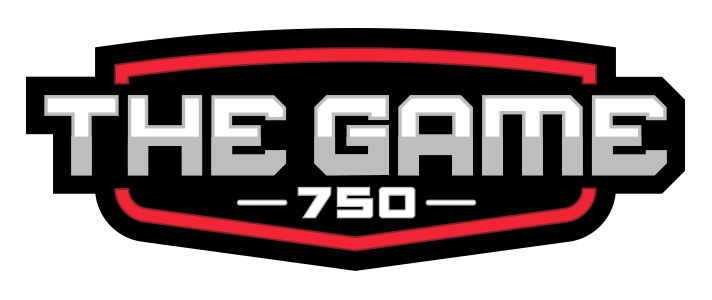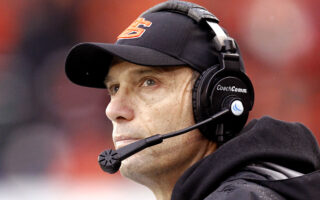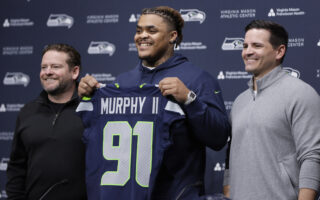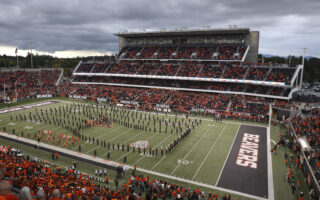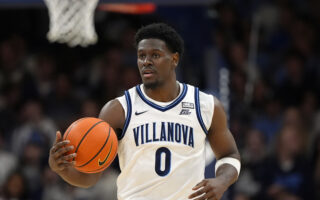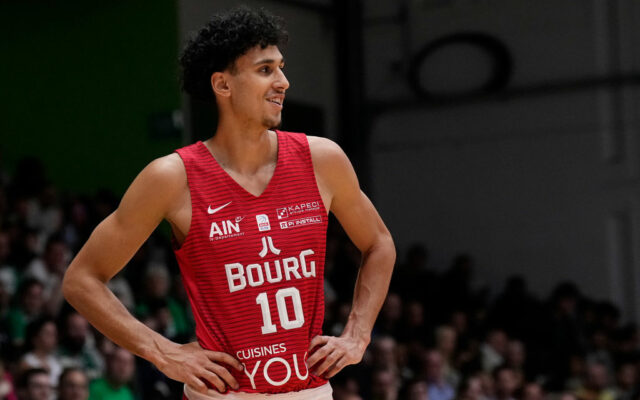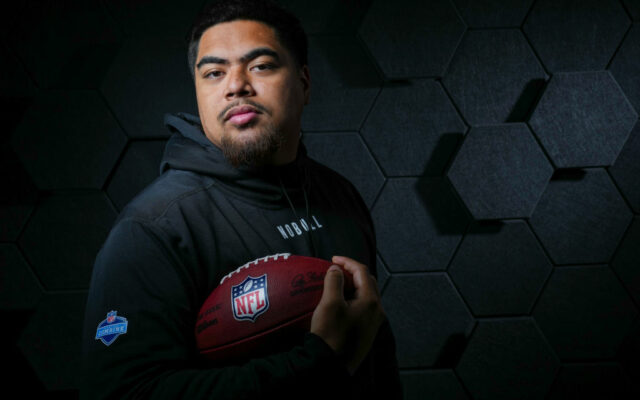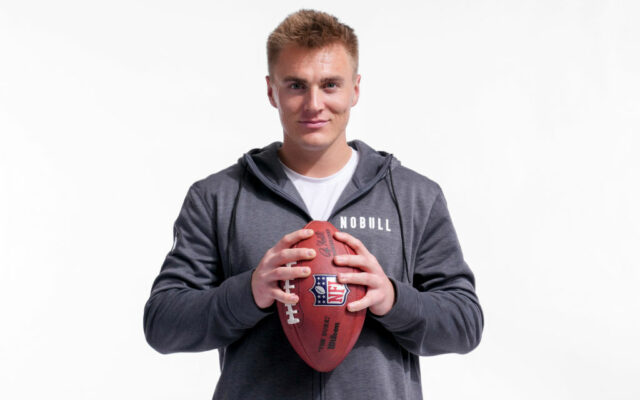Seahawks Draft Strategy Raises Questions About Team’s Direction
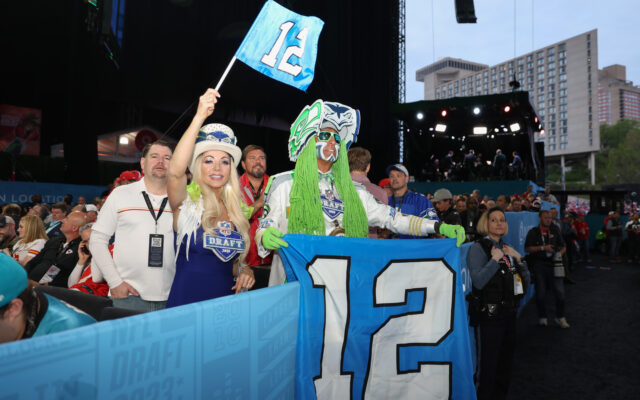
By CASEY MABBOTT, OREGON SPORTS NEWS
The NFL Draft took place April 27th-29th, and Seattle held ten selections. They had needs here and there, but the most pressing issues were defensive line and offensive line. They were in luck as they held two picks in the first 20 selections, and there were quite a few options available to them, so it was doubtful they would pass on both needs with both picks.
With very highly regarded pass rushers and protectors on the board, the time to choose the player at #5 arrived, and the front office went another way. They decided to focus on the secondary and selected cornerback Devon Witherspoon.
Before we go any further, let me say this – Witherspoon is a really, really good player. He didn’t have a top-five grade going into the draft, and most experts had Seattle going with a different position entirely, but that doesn’t make it a bad pick, nor does it mean Witherspoon wasn’t worth that high a pick. But it was a strange sequence that few outside Seattle’s brain trust saw coming.
This isn’t to say Seattle didn’t need help in the secondary. Seattle allowed the 14th most passing yards in the NFL in 2022. You might look at that number and think, “That’s not bad.” And it’s not bad, but it’s not great. And you might also have been thinking they looked worse than that against the pass last year, and they did. They gave up chunk plays like it was a charity drive.
With 45 sacks, they were 9th in the league, which is pretty impressive considering they gave up more scores and first downs than half the league, with takeaways ranking in the top 20. It would be easy to look at those stats and think you’re set on the defensive line but need help in the secondary, but anyone watching games last year knew the defensive line wasn’t getting to the QB as often as their numbers would indicate. You don’t put massive pressure on the offense and give up a ton of yards and points. That’s not how it works.
Another way to grade the defensive line is to look at rushing numbers, and Seattle allowed the third most yards on the ground in the NFL in 2022, along with the 6th most scores. You might have good edge rushers, but those rushing numbers indicate the middle of your defense is incredibly soft. The interior of the line was so soft that some teams all but gave up passing in their game against Seattle, knowing the Seahawks couldn’t stop the run. Getting Bobby Wagner back may help patch the dam, but it won’t be as strong as it could be with an influx of very talented athletic monsters in the middle.
The rule with defense is that a better pass rush requires less coverage time from your secondary, and the better the pressure, the more likely the opposing QB will make mistakes. It doesn’t matter how good your corners and safeties are if they have to try and disrupt routes and shadow receivers for more than a few seconds. Someone is going to get open; that’s the rule. You have to reduce the amount of time the great athletes on offense have to get themselves in position with the rules tipping in their favor on every single down.
When Seattle won the Super Bowl in 2013, they had a great pass rush that forced the ball into their great secondary early, so even if the QB avoided a sack, they didn’t necessarily avoid a turnover. That’s the kind of pressure Seattle needs to build each and every drive, and if they’re not doing that, then they are leaving their secondary hung out to dry. The funny thing? They didn’t lead the NFL in sacks that year, not even close. They had sixteen fewer sacks than the team with the most sacks in 2013. But Seattle was money when it counted, as just one team gave up fewer first downs, and Seattle had the second-fewest scores and the most interceptions.
They weren’t just a good pass defense; they also allowed the 7th fewest rushing yards along with the fewest rushing scores. That defensive line never quit, they never let the offense get what they wanted, and they made their lives hell for 60 minutes weekly.
You bring down your opponent by making them think the hits are coming even when the hits don’t actually arrive. You want them to fear what you can do to them and their chances every single play. Now you might be thinking it’s unfair to compare this defense to 2013, and you’re right. So what about 2012?
In 2012, Seattle allowed the 6th fewest passing yards and 3rd fewest scores while racking up the 10th most interceptions. They only had the 19th most sacks and allowed a first down 33% of the time. They were 10th in rushing yards allowed and 5th in scores allowed. They had a very solid defense but knew they needed a better pass rush to finish the job, so they hired QB hitmen Michael Bennett and Cliff Avril to pair with veteran Chris Clemons and second-year pass rusher Bruce Irvin.
That defensive line took off in 2013 and set an unfair precedent that opposing QBs would have four seconds or less to decide how they would get rid of the ball. I won’t make you wait; I’ll just tell you – not many QBs got the ball out of their hands that quickly, or if they did, the pass was rarely on target.
This offseason, Seattle signed defensive lineman Dre’Mont Jones and brought back Jarran Reed to team with veterans Darrell Taylor and Uchenna Nwosu and second-year pass rusher Boye Mafe. This new group may get great pressure on the opposing offense, but they still need a plug for the rushing game, and they don’t appear to have it. They didn’t have great nose tackles in 2012 or 2013, but they had big dudes that could shove the offensive line backward and give the edge rushers more time to get around the corners. That made life hell for the running backs and QBs, something we haven’t seen from Seattle in recent years.
Seattle had two chances in the first round to draft a defensive lineman, but they went secondary with their first pick and receiver with their second pick. They had two picks in the second round as well, and they took a defensive lineman with one of their picks, but they got help on the edge rather than a guy they could play in the middle. They didn’t select a nose tackle until the fourth round, and it’s possible they can get an immediate impact out of a fourth-round pick, but it’s not likely. Seattle needed more depth at guard and center but didn’t address those needs until the fourth and fifth rounds. Usually, your picks in the first and second rounds are intended to be impact players early in the season, and picks after that will need time to develop. It’s not a rule, but it’s a fair expectation.
Seattle gave up rushing yards like Christmas presents last year. Do we expect a 4th round pick to fix that? The last time Wagner was playing in Seattle, they had the 16th-ranked rush defense, so his return will help, but that was also the same year their secondary gave up more yards than all but one team, so it’s tough to say if the run defense was that good or if teams just felt like passing on a defense that never seemed to be near the ball.
This draft just feels like the long game; it doesn’t feel like they went after guys that can help make them a contender today. And that’s fine; this is a young team building towards something big. But they didn’t address those needs in free agency or trades either. They can still trade for help if they like, but that will probably not happen until the front office sees their current roster in action in the fall.
Pete Carroll thinks Witherspoon is a similar player to legendary safety Troy Polamalu, and that’s extremely high praise for a rookie. What’s interesting is that Carroll said they had not used a pick this high on a cornerback before due to not having picks this high and not having guys like this available even to move up to draft. This is even more interesting, considering Carroll selected Earl Thomas, Kam Chancellor, and Richard Sherman in 2010 and 2011. Three of the greatest defenders the league has ever seen weren’t on the same level as Witherspoon coming out of college?
That’s such high praise for a guy that’s never played a down in the NFL that it’s possibly too high.
That puts a lot of pressure on Witherspoon to be the spark for second-year coordinator Clint Hurtt’s scheme. The pass rush might be better than last year, but they might not have the right mix of players to solve their issues in the middle of the defense. They definitely got better on paper, and if Witherspoon can pair with second-year corners Tariq Woolen and Cobe Bryant and veteran safeties Jamal Adams and Quandre Diggs, this secondary could be great. Still, a lot of that depends on how much time the QB has to throw. If this defensive line gives QBs more than 4 seconds to throw, it could be trouble for an unproven rookie CB and two still-developing second-year CBs.
